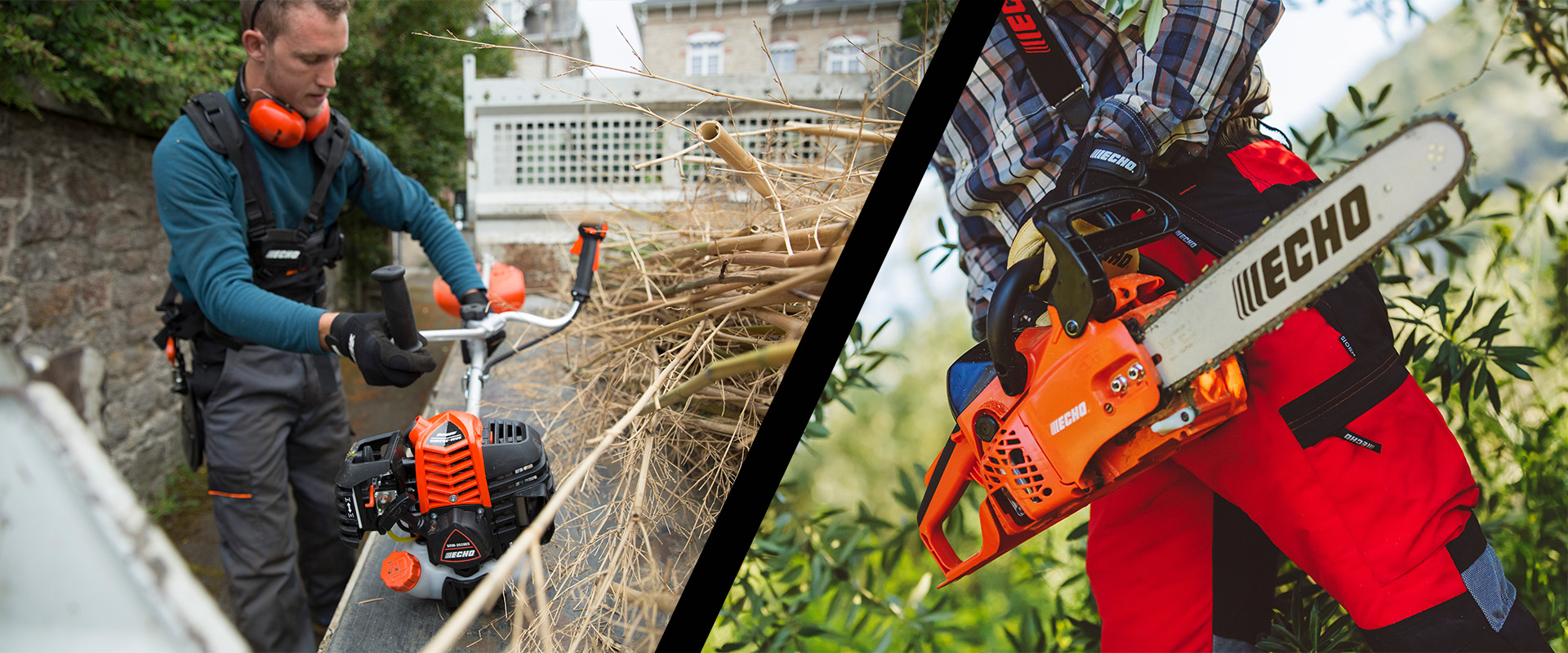
7. říjen 2024
Nezbytné podzimní práce na zahradě: Jak používat křovinořez a motorovou pilu
Jakmile se ochladí a listí začne padat, je podzim ideálním obdobím pro údržbu zahrady a přípravu na zimní měsíce. Váš křovinořez a motorová pila jsou klíčovými nástroji, které vám pomohou udržet zahradu upravenou a zajistit, že vaše rostliny a stromy budou na jaře prospívat. V tomto průvodci se zaměříme na hlavní podzimní úkoly, které můžete s těmito nástroji zvládnout.
Proč je podzim nejlepším obdobím pro údržbu zahrady
Podzim je ideálním časem pro zahradní údržbu z několika důvodů. Stromy a rostliny přecházejí do klidového stavu, což činí prořezávání bezpečnějším a účinnějším. Navíc je nutné odstranit spadané listí, přerostlé keře a suché větve, aby nedošlo k poškození během zimních bouří. Správným používáním křovinořezu a motorové pily můžete zahradu vyčistit a připravit na příchod chladnějšího počasí.
Úkoly pro váš křovinořez
1. Stříhání přerostlých keřů a živých plotů
Podzim je ideální čas na úpravu keřů a živých plotů. Použijte křovinořez k ořezání přerostlých větví a tvarování keřů, než zhoustnou. Prořezávání na podzim snižuje riziko poškození těžkým sněhem nebo ledem v zimě a podporuje zdravý růst na jaře.
- Keře a živé ploty: Odstraňte přebytečné větve, abyste zajistili upravený vzhled a zlepšili cirkulaci vzduchu.
- Trvalky: Ořežte odumřelé nebo umírající části rostlin a připravte je na zimu.
2. Vymezení okrajů záhonů a cest
Pomocí křovinořezu můžete na podzim upravit okraje záhonů a cest. Čisté, dobře definované okraje zlepšují celkový vzhled zahrady a brání trávě v prorůstání do květinových záhonů.
- Okolo cest: Vyčistěte okraje chodníků a příjezdových cest od trávy a nečistot.
- Záhony: Vytvořte upravené hranice mezi trávníkem a záhony odstraněním přerostlé trávy a plevele.
3. Odklízení nepořádku
Spadané listí, větve a další nečistoty se během podzimu hromadí na zahradě. Křovinořez vám může pomoci vyčistit těžko dostupná místa, jako jsou oblasti pod keři nebo podél plotů.
- Doporučení: Zvažte použití multifunkčního nástroje s přídavným foukačem, například ECHO PAS-2620ES (benzínový model) nebo DPAS-2600 (56V bateriový model).
Úkoly pro vaši motorovou pilu
1. Prořezávání stromů
Pozdní podzim je ideální čas pro prořezávání stromů před zimou. Pomocí motorové pily odstraňte suché nebo oslabené větve, které by mohly během zimních bouří spadnout a způsobit škody.
- Suché větve: Odstraňte větve, které jsou již odumřelé nebo vykazují známky hniloby.
- Tvarování: Zkraťte přerostlé větve, aby stromy měly správný tvar a podpořily zdravý růst na jaře.
2. Odstraňování spadlých větví a stromů
Podzimní bouře mohou na zahradě zanechat spadané větve nebo dokonce celé stromy. Motorová pila je nejefektivnějším nástrojem k jejich rozřezání na menší kusy pro snadné odstranění nebo využití jako palivového dříví.
- Bezpečnost: Ujistěte se, že strom nebo větev je stabilní, než začnete řezat. Začněte s odstraňováním menších větví, než rozřežete kmen na části.
- Palivové dřevo: Pokud používáte krb nebo kamna na dřevo, podzim je skvělý čas na přípravu zásob paliva.
3. Kácení suchých nebo nemocných stromů
Stromy, které nepřežily léto nebo vykazují známky onemocnění, je nejlepší pokácet na podzim. Suché stromy mohou během zimních bouří představovat značné riziko.
4. Pročištění hustých porostů
Máte-li na pozemku zalesněné oblasti, podzim je vhodný čas na odstranění přerostlého porostu a ztenčení hustě zarostlých míst. To pomůže zabránit šíření chorob mezi stromy a keři a zjednoduší údržbu v budoucnu.
Další tipy pro podzimní práce na zahradě
- Správná likvidace odpadu: Po stříhání nebo kácení větví kompostujte listí nebo likvidujte zahradní odpad v souladu s místními předpisy.
- Kontrola nástrojů: Před zahájením prací zkontrolujte, zda jsou křovinořez a motorová pila v dobrém stavu. Naostřete řetězy, vyměňte opotřebované díly a zajistěte správné mazání.
- Bezpečnost: Vždy používejte ochranné pomůcky, jako jsou rukavice, brýle a ochrana sluchu. Ujistěte se, že vaše pracovní plocha je bezpečná a bez překážek.
